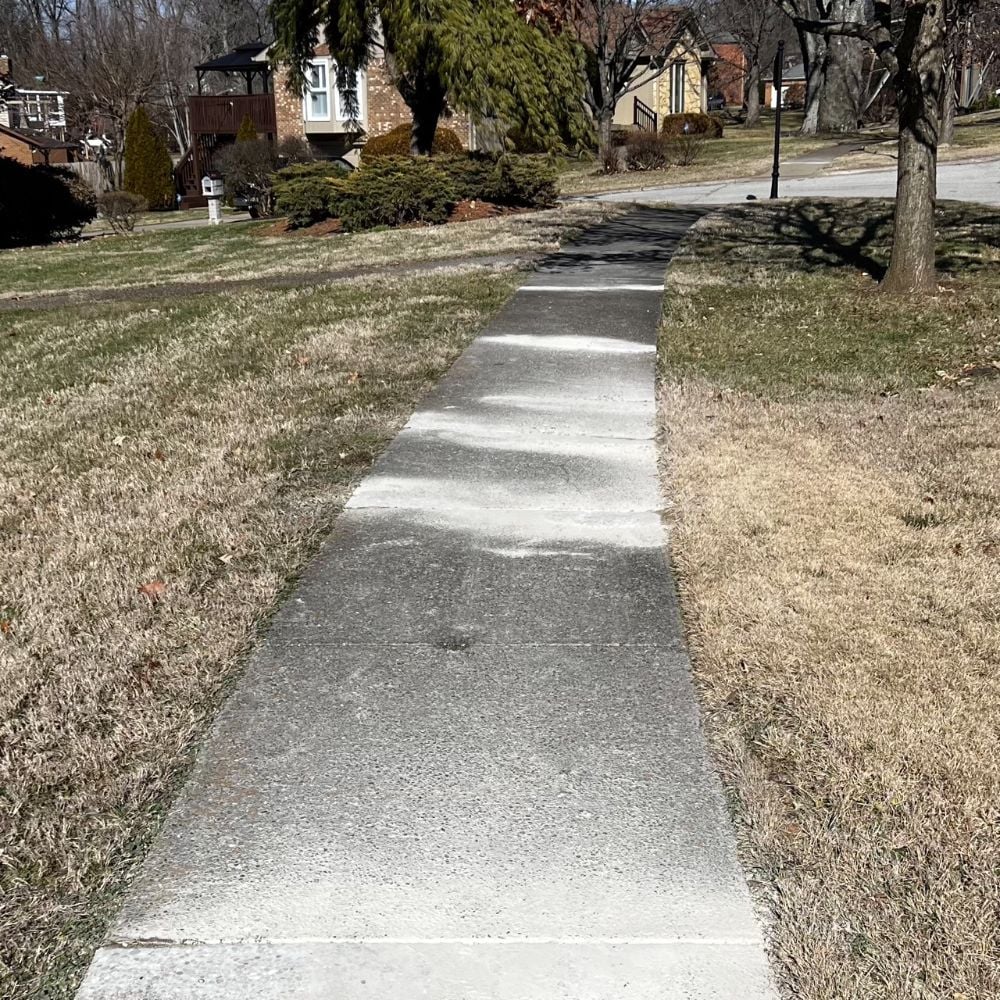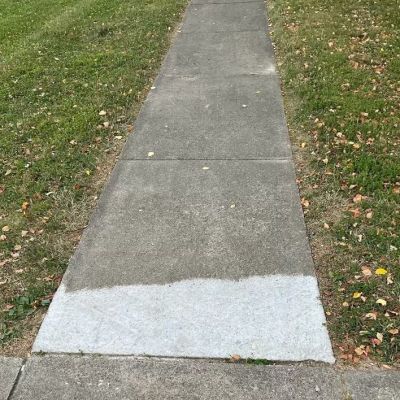
Concrete grinding is a cheap and quick way to even out unlevel concrete slabs, but there's more to know about this concrete repair method.
Uneven concrete and the trip hazards that come with it are a nuisance for property owners everywhere. From unsightly surfaces bringing down your curb appeal, to the concern of someone tripping and falling on an uneven slab, fixing uneven concrete is a must.
Luckily, there are quite a few options available to repair and combat uneven concrete and the issues that it causes. Concrete grinding is one way to go about this, and it’s actually a relatively quick and cost-effective solution.
Here at A-1 Concrete Leveling, we’ve been repairing and restoring settled concrete for over 30 years, and in this time we’ve gotten to know the ins and outs of many concrete repair solutions, including grinding.
Although here at A-1 we usually don’t recommend concrete grinding as the first choice for concrete repair, we want to make sure you have as much information as possible about all available options in order to make the best decision for your home, property, or neighborhood.
In order to do this, we’ve created this article to walk you through what concrete grinding is, how it’s done, the costs associated with it, and the potential risks that it can bring, including why we don’t usually recommend it as a first choice.
What is concrete grinding?
Concrete grinding is the process of sanding down the surface of the concrete to reduce offsets, trip hazards, or uneven areas. Generally, the goal of concrete grinding is to achieve safe, even concrete in the most cost-effective way possible.
It’s important to note that because concrete grinding only takes material away from the top of the slab in order to achieve an even grade, it doesn’t address the real reason the concrete settled or raised in the first place, which could allow the slab to continue settling.
Related Resource: Why Concrete Settles
How to Grind Concrete
Grinding down concrete is a fairly straightforward process. Most of the time, grinding down concrete slabs can be done with a handheld angle grinder and an attached diamond cup wheel. If grinding is needed in large quantities, it can be done with walk-behind grinding units.
To go about doing the actual grinding with a handheld grinder, you’ll have to get down on your knees to work away at the offset concrete until it’s no longer a trip hazard. This process creates a lot of concrete dust, so attaching a vacuum to the grinder is a good idea.
Don’t Take Too Much Off
If you need to take more than two inches off the offset in order to get it even and level with the neighboring concrete slabs, it’s best not to grind it down as it can thin out and weaken the concrete considerably. Instead, consider other repair options, like concrete leveling.
Staying Safe
When grinding down concrete, take care of your eyes and lungs by wearing safety goggles and a protective dust mask. When ground into dust and breathed in, the particles in concrete can cause silicosis, a major health problem that can lead to death.
The Cost of Concrete Grinding
When compared to repair alternatives like concrete leveling or total replacement, concrete grinding is usually the cheapest way to reduce trip hazards and uneven concrete upfront, especially with discounts for jobs where grinding is done in large quantities.
However, it’s important to point out that it is only a short-term solution, as grinding the concrete thins and weakens the slabs. This makes the concrete more susceptible to damage, which may warrant the need for expensive premature replacement or additional work. As concrete grinding typically does not come with a warranty, having to repeat the repair can get costly.
Concrete Grinding Risks
While grinding down areas of uneven concrete around your property can be a fast and inexpensive process, it does come with some drawbacks and risks that are worth considering before committing to this repair method. These risks and drawbacks include:
- Thinner, weaker concrete
- Breaking and crumbling
- Future issues due to not addressing the root problem
- Mismatched, patchy, or unappealing slabs
Freeze-thaw Cycles and Concrete Grinding
Because concrete is porous, it absorbs water. When the wet concrete freezes, that water expands and causes the pores of the concrete to pop. Over time, this expansion due to freezing and thawing, then refreezing, causes damage to the concrete slab.
When the surface of the concrete is ground down, it exposes more of the concrete’s pores. This makes it easier for the concrete to absorb more water and in turn, increases the amount of damage done to the concrete during freeze-thaw cycles, like cracking, breaking, crumbling, and pitting.
Ignoring Underlying Problems
Grinding the surface does nothing for the underlying problem that’s causing the concrete to settle, like voids or tree roots, which means the slab may continue to sink or raise and cause the trip hazards to return.
If this is the case, it will need to be repaired again, but keep in mind that it may be too thin to grind down a second time without risk to the slab.
Related Resource: When to Grind Your Concrete
Concrete Grinding for Property Managers, HOAs, Maintenance Supervisors, etc.
Because concrete grinding is a cheap and effective way to minimize trip hazards quickly, it's used by many commercial property managers and HOAs.
Discounts are often also given out when grinding work is done in large quantities, which is an added bonus.

Is Concrete Grinding Worth It For Commercial Properties?
While grinding can be cost-effective, the long-term effects and risk of additional damage to the concrete may outweigh the upfront lower cost and quick turnaround time. Not to mention, the patchiness of grinding can decrease curb appeal, aesthetics, and in turn, property value.
Concrete Leveling as an Alternative
An alternative like concrete leveling doesn’t expose the concrete to additional damage, a warranty is typically included, and it costs less over the long term because you avoid premature replacement, which can be incredibly expensive over large areas.
Concrete Grinding: Your Next Steps
Now that you know more about the ins and outs of concrete grinding, you’re ready to consider whether or not it’s a good option for your property.
While here at A-1 Concrete Leveling we don’t recommend grinding as the first option for concrete repair due to the increased risk of damage to the concrete, we know that in some cases it’s the best alternative depending on each situation’s circumstances.
Interested in learning more about concrete grinding and its alternatives? The following links are related Concrete Academy resources that can help you learn more:
Want to know how A-1 can help restore your concrete? Click the link below to request a free onsite consultation and cost estimate with an A-1!
Click Here to Find Your Nearest Location and Receive a FREE Estimate
Sarah Etler joined A-1 Concrete Leveling after receiving her Bachelor of Arts degree in English from Northern Kentucky University. As A-1's Content Marketing Manager, she works closely with industry experts to produce content that will best answer questions related to concrete repair and maintenance practices. Sarah loves living a life full of discovery and is excited every day to see what new things she can learn and share with those around her.
Topics: